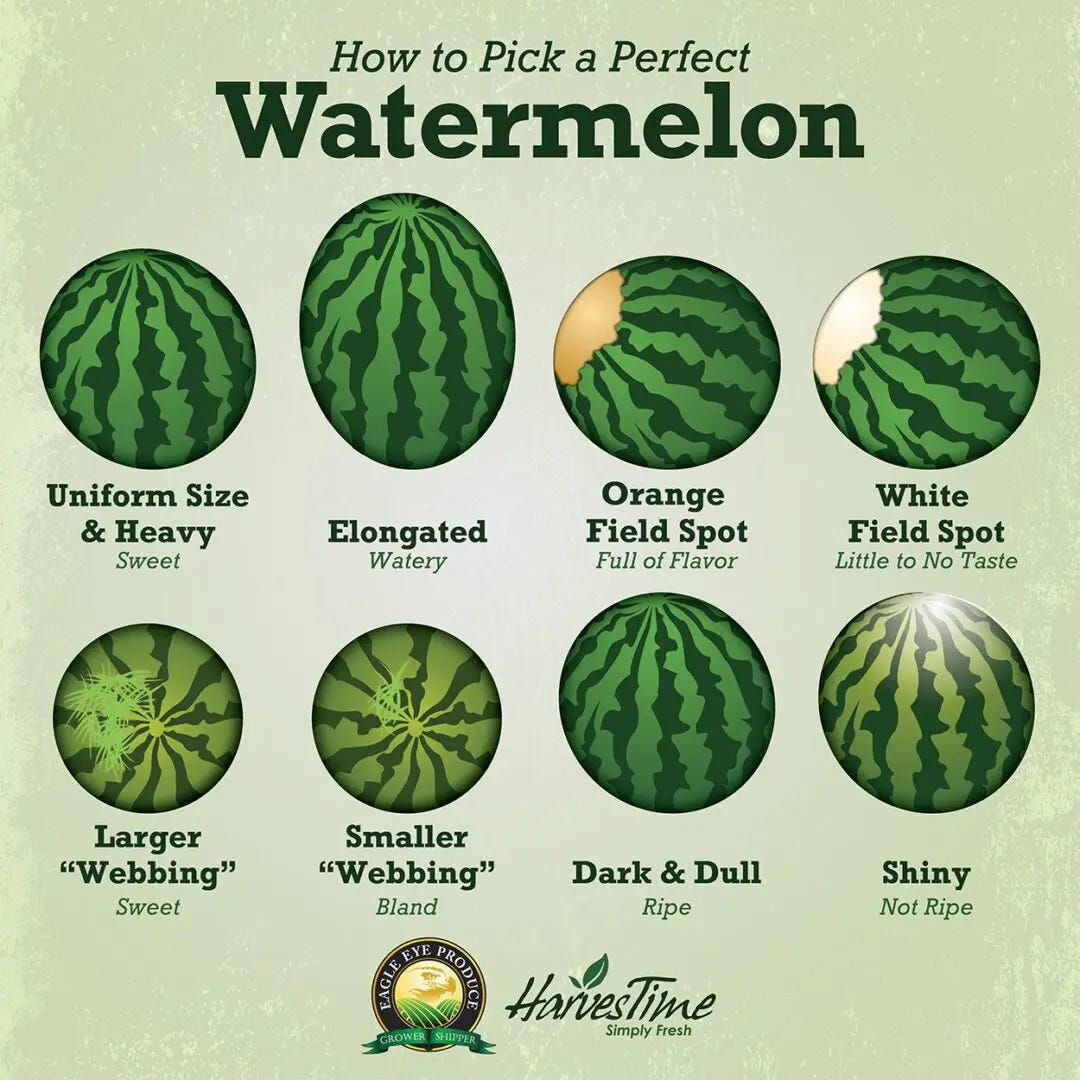Picking the right watermelon is more than just a random grab—it’s an art form. A perfectly selected watermelon can elevate your summer picnics, barbecues, or any gathering, while an underripe or overripe fruit will leave you disappointed. The key to success lies in visually inspecting the watermelon, ensuring it’s ripe, juicy, and flavorful. Let’s explore the essential steps for selecting a watermelon based solely on its appearance, helping you make the best choice every time.
Step 1: Look for a Uniform Shape
Opt for a watermelon that has a consistent, symmetrical shape, whether round or oval. An irregular shape could suggest uneven growth, which may affect the texture and taste. Consistency is key for optimal ripeness.
Step 2: Check for the Field Spot
The field spot is a creamy yellow or butter-like patch where the watermelon rested on the ground. This area should not be white or absent—such imperfections may indicate that the watermelon was picked too early and might not be fully ripe. A good field spot is a sign of natural ripening.

Step 3: Inspect the Color
A ripe watermelon should have a deep green color with clearly defined stripes. Avoid watermelons with light green or inconsistent coloring, as this may indicate the fruit is still underripe. The deeper and more consistent the color, the better the chance of sweetness.
Step 4: Assess the Skin Texture
The skin should have a dull finish, not shiny. A shiny surface often signals an underripe watermelon. Additionally, check for any major cuts or bruises that could indicate damage, which can affect the overall quality of the fruit.
Step 5: Look for Webbing
Web-like, brown marks on the watermelon’s skin often indicate that bees pollinated it multiple times. This webbing is a good sign, as it suggests the fruit is sweet and has had proper pollination.
Step 6: Size and Weight Matter
While size alone isn’t the best indicator of quality, the weight of the watermelon is crucial. Heavier watermelons tend to be juicier, as they contain more water. Compare similarly sized watermelons and choose the one that feels heavier for its size.
Step 7: Check the Stem
If the watermelon still has its stem, make sure it is brown and dry. A green stem could mean the fruit was picked prematurely, and it may not be fully ripe. The stem should show signs of age for a sign of maturity.
Common Mistakes to Avoid
- Ignoring the Field Spot: The field spot’s color (creamy yellow) shows the melon ripened naturally, which is crucial for its sweetness.
- Not Tapping the Melon: Tapping helps you determine if the watermelon is ripe. A hollow, deep sound is a sign of juiciness and readiness.
- Overlooking Shape and Uniformity: Avoid choosing watermelons with irregular bumps or inconsistent shapes. Symmetry suggests consistent ripening.
- Selecting Based on Size Alone: Larger isn’t always better. Medium-sized watermelons often have a more desirable texture and flavor.
- Ignoring the Skin Surface: Small cuts, bruises, or blemishes can indicate poor handling or that the fruit may be spoiled.
- Choosing by Color Alone: While a deep green color is good, it should be combined with other visual factors like field spots and sound for the best results.
- Not Considering Weight: Watermelons should feel heavy for their size. This ensures the fruit has high water content and is juicy.
- Forgetting Seasonality: Watermelon is best when it’s in season, typically during the summer months. Out-of-season watermelons may not have the same flavor or texture.
By following these simple visual cues, you’ll be able to pick the perfect watermelon every time. This method will save you from wasting money on an unsatisfactory fruit and ensure your next watermelon experience is the best yet. Happy picking!
